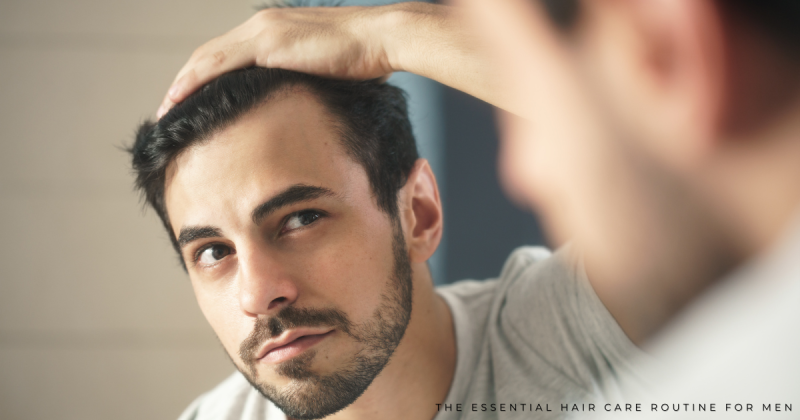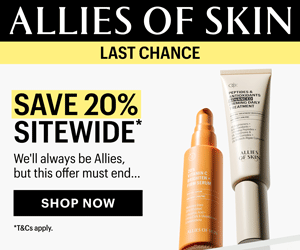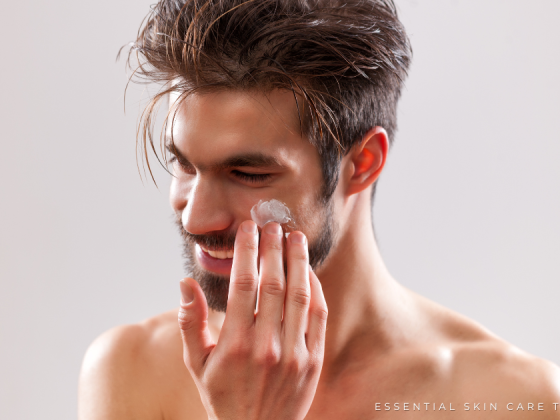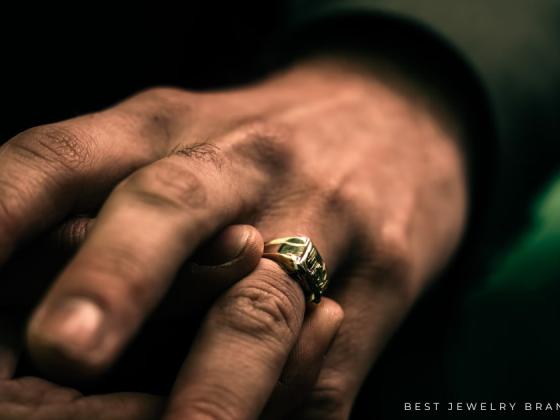
Every guy wants a solid hair care routine that’s easy to stick with and delivers noticeable results. But with so many products and tips out there, it’s easy to get overwhelmed. If you’ve been scratching your head about how to take better care of your locks, you’re not alone. From choosing the right shampoo to understanding how often you should wash your hair, this guide will walk you through everything you need to know for a top-notch hair care routine for men.
In this comprehensive article, we’ll break down the essential steps for keeping your hair looking great, whether you’re dealing with a short, classic cut or a longer, more textured style. We’ll cover everything from daily habits to the best products to use. By the end, you’ll have a clear, actionable plan to improve the health and appearance of your hair. So, let’s dive in and unlock the secrets to a fantastic hair care routine!
Why Hair Care Matters: The Basics
Hair care isn’t just about looking good; it’s also about maintaining healthy hair and scalps. Proper hair care can prevent problems like dandruff, dryness, and excessive oiliness. It also helps keep your hair looking fresh and well-groomed.
Benefits of a Good Hair Care Routine:
- Prevents Hair Damage: Regular care can reduce split ends, breakage, and other damage.
- Promotes Healthy Growth: A clean and nourished scalp is essential for optimal hair growth.
- Enhances Appearance: Well-maintained hair looks shinier and more vibrant.
The Essential Hair Care Routine for Men
A successful hair care routine doesn’t have to be complicated. Here’s a step-by-step guide to help you maintain healthy, stylish hair.
1. Choose the Right Shampoo
Not all shampoos are created equal. Picking a shampoo that matches your hair type and needs is crucial.
Understanding Your Options:
- For Oily Hair:
- Clarifying Shampoos: These shampoos are designed to remove excess oil and residue from styling products. They are often stronger than regular shampoos and should be used sparingly—about once a week—to avoid over-drying.
- Balancing Shampoos: These offer a more gentle approach to controlling oil and maintaining the scalp’s natural balance. They can be used more frequently without stripping your hair of necessary moisture.
- For Dry Hair:
- Moisturizing Shampoos: Formulated with hydrating ingredients like shea butter or oils, these shampoos help to lock in moisture and prevent dryness. They usually have a creamier texture and are less likely to strip natural oils.
- Hydrating Shampoos: Often containing ingredients like glycerin or aloe, these are great for adding moisture and improving the elasticity of your hair.
- For Dandruff:
- Shampoos with Zinc Pyrithione: This ingredient helps reduce yeast on the scalp, which can cause dandruff.
- Shampoos with Ketoconazole: A stronger antifungal ingredient, ketoconazole helps treat more severe cases of dandruff and flaking.
Additional Tip: Look for shampoos that are free from parabens and artificial fragrances, as these can sometimes cause scalp irritation.
2. Don’t Overwash
Washing your hair too often can strip it of natural oils and lead to dryness. Generally, washing 2-3 times a week is sufficient for most men.
Why Washing Less Can Be Better:
- Natural Oils: Your scalp produces natural oils that are essential for healthy hair. Washing too frequently can strip these oils away, leading to dryness and irritation.
- Scalp Health: Overwashing can disrupt the scalp’s natural balance, potentially leading to issues like increased oil production or flakiness.
Guidelines for Washing Frequency:
- Oily Hair: May need to wash more frequently, but consider using a gentler shampoo or alternating with a clarifying one to avoid over-drying.
- Dry Hair: Less frequent washing is ideal. Aim for every 3-4 days or as needed based on how your hair feels.
- Activity Level: If you’re highly active or sweat a lot, consider using a mild shampoo or a dry shampoo between washes to manage oil and sweat without frequent washing.
3. Condition Regularly
Importance of Conditioning:
- Replenishing Moisture: Conditioners help to restore moisture lost during shampooing, making your hair softer and easier to manage.
- Preventing Damage: Conditioning helps to smooth the hair cuticle, reducing tangling and breakage.
Types of Conditioners:
- Rinse-Out Conditioners: Apply after shampooing and leave in for a few minutes before rinsing. These are great for daily use.
- Leave-In Conditioners: Ideal for added moisture and protection, especially if your hair is dry or damaged. They provide ongoing conditioning throughout the day.
Application Tips:
- Focus on Ends: Concentrate conditioner on the ends of your hair, which are more prone to dryness and damage.
- Avoid Roots: Applying conditioner to the roots can lead to excess oil buildup and a greasy appearance.
4. Dry Hair Properly
How you dry your hair can affect its health. Here are some tips for drying your hair without causing damage.
Techniques for Healthy Drying:
- Pat Dry with a Towel:
- Avoid Rubbing: Rubbing can cause hair breakage and frizz. Instead, gently blot and press your hair with a towel to remove excess water.
- Air Drying:
- Natural Drying: Allowing your hair to air dry is the best option for minimizing heat damage. It’s gentler on your hair and helps maintain its natural texture.
- Using a Blow Dryer: If you need to use a blow dryer, keep it on a low or medium heat setting. Hold it at least 6 inches away from your hair to prevent overheating.
Additional Tip: Using a heat protectant spray before blow-drying or using other heat tools can help minimize damage.
5. Use Hair Products Wisely
The right hair products can enhance your style and protect your hair. Choose products based on your hair type and the look you want to achieve.
Choosing and Applying Products:
- Pomades and Waxes:
- Texture and Hold: Great for achieving a defined look and adding texture. They work well for styles that require a bit of extra control and shaping.
- Application: Apply a small amount to dry hair, and use your fingers to distribute it evenly.
- Gels:
- Strong Hold: Ideal for slicked-back styles or controlling frizz. However, overuse can lead to a crunchy texture and potential flakiness.
- Application: Use sparingly and avoid applying too close to the roots to prevent buildup.
- Hair Sprays:
- Volume and Setting: Perfect for setting styles and adding volume. Lightly mist over your finished style for hold without stiffness.
- Application: Hold the can 10–12 inches away from your hair to ensure an even application.
Additional Tip: Always start with a small amount of product and build it up as needed. Overapplying can weigh your hair down and make it look greasy.
Hair Care Tips for Different Hair Types
Understanding your hair type is crucial for selecting the right products and techniques. Here’s a detailed guide to help you tailor your hair care routine based on your specific hair type.
1. Straight Hair
- Generally less prone to dryness.
- Can become greasy or weighed down if not managed properly.
Hair Care Tips:
- Keep It Clean: Use a mild shampoo and conditioner to avoid stripping away natural oils. Look for products labeled as “lightweight” or “balancing” to maintain shine without making your hair greasy.
- Avoid Overuse of Products: Straight hair can easily become weighed down by excessive use of styling products. Stick to a minimal amount of product and avoid applying too much near the roots.
- Regular Trims: Even though straight hair doesn’t show split ends as clearly as other types, regular trims help keep it looking healthy and prevent any potential split ends from forming.
Additional Tips:
- Dry Shampoo: If your hair tends to get oily between washes, a light application of dry shampoo can help absorb excess oil and refresh your look.
2. Curly Hair
- Naturally drier and more prone to frizz and breakage.
- It requires extra moisture and care to maintain its shape and health.
Hair Care Tips:
- Moisturize: Use a hydrating shampoo and conditioner designed for curly hair. Look for products with ingredients like shea butter, coconut oil, or glycerin to help lock in moisture and reduce frizz.
- Avoid Heat Styling: Minimize the use of heat tools like flat irons and curling irons, which can lead to dryness and damage. Embrace natural curl patterns and consider using a diffuser if you need to use a blow dryer.
- Deep Conditioning: Incorporate a deep conditioning treatment or hair mask into your routine once a week to provide extra hydration and strengthen your curls.
Additional Tips:
- Leave-In Conditioner: A leave-in conditioner or curl cream can help define curls and reduce frizz throughout the day.
- Wide-Tooth Comb: Use a wide-tooth comb to detangle wet hair gently, starting from the ends and working your way up to prevent breakage.
3. Wavy Hair
- Falls between straight and curly hair types.
- Can have a mix of dryness and oiliness, with a tendency to go limp if not properly cared for.
Hair Care Tips:
- Define Waves: Use lightweight styling products like mousse or sea salt spray to enhance and define natural waves. These products help add volume and maintain the shape of your waves without making them feel crunchy or heavy.
- Avoid Heavy Products: Heavy gels or creams can weigh down wavy hair and make it look limp. Stick to lighter formulas to avoid flattening your waves.
- Balancing Shampoo: Use a balancing or volumizing shampoo to help manage oiliness at the roots while keeping the waves looking fresh and bouncy.
Additional Tips:
- Avoid Over-Washing: Washing too often can strip away natural oils, making waves look flat. Aim to wash your hair 2-3 times a week to maintain balance.
- Scrunching: After applying styling products, gently scrunch your hair with your hands to encourage wave formation.
4. Thinning Hair
- Can appear less dense and may have areas of sparse coverage.
- Requires products and techniques that enhance volume and promote growth.
Hair Care Tips:
- Use Volumizing Products: Volumizing shampoos and conditioners can help make your hair appear thicker and fuller. Look for products with ingredients like panthenol or proteins that help add body to your hair.
- Consider Scalp Treatments: Scalp treatments with biotin, caffeine, or minoxidil can stimulate hair follicles and promote healthier hair growth. These treatments can be used in conjunction with your regular hair care products.
- Gentle Handling: Be gentle when washing and brushing thinning hair to prevent breakage and additional hair loss. Use a soft-bristled brush or a wide-tooth comb.
Additional Tips:
- Avoid Heavy Styling Products: Heavy styling products can weigh down thinning hair. Instead, use light texturizing sprays or powders that add volume without causing buildup.
- Healthy Lifestyle: A balanced diet rich in vitamins and minerals, such as iron and vitamin D, can support overall hair health and potentially improve the condition of thinning hair.
Hair Care Routine for Men: Common Mistakes to Avoid
Even with a well-designed hair care routine, small missteps can lead to problems. Here’s a closer look at common hair care mistakes and practical tips for avoiding them.
1. Using Too Much Product
Why It’s a Problem:
- Greasy Appearance: Applying too much product can make your hair look greasy and weighed down. This can be especially problematic for men with straight or fine hair.
- Build-Up: Excessive product use can lead to product build-up on your scalp and hair, causing clogged pores and potential scalp issues like dandruff or irritation.
How to Avoid It:
- Start Small: Begin with a small amount of product. You can always add more if needed, but starting with less helps you avoid overloading your hair.
- Distribute Evenly: Ensure that the product is evenly distributed throughout your hair. For gels or pomades, use your fingers to work the product through your hair from root to tip.
- Choose the Right Product: Select products designed for your hair type and styling needs. For example, use a lightweight mousse for volume or a small amount of pomade for a sleek look.
Additional Tip:
- Use Dry Shampoo: If you notice your hair becoming greasy throughout the day, a light application of dry shampoo can help absorb excess oil without the need for extra product.
2. Neglecting the Scalp
Why It’s a Problem:
- Scalp Health: A neglected scalp can lead to problems such as dandruff, dryness, or excess oil. The scalp is the foundation for hair growth, and maintaining its health is crucial for overall hair health.
- Hair Growth: Poor scalp circulation and buildup can hinder hair growth and lead to thinner or weaker hair over time.
How to Avoid It:
- Regular Scalp Massages: Incorporate scalp massages into your routine to stimulate blood flow and promote healthier hair growth. Use your fingertips to gently massage your scalp for a few minutes while shampooing.
- Scalp Treatments: Use treatments specifically designed for scalp health. Products containing ingredients like tea tree oil or salicylic acid can help manage dandruff and keep your scalp clean.
- Exfoliate Occasionally: Scalp exfoliators can help remove dead skin cells and product build-up, ensuring a cleaner, healthier scalp.
Additional Tip:
- Hydration: Ensure your scalp is well-hydrated by using a conditioner that suits your scalp type. If you have a dry scalp, consider using a hydrating treatment or oil to add moisture.
3. Ignoring Haircuts
Why It’s a Problem:
- Split Ends: Regular trims help prevent split ends from traveling up the hair shaft, which can lead to more significant damage and breakage.
- Maintaining Style: Regular haircuts are essential for maintaining your chosen hairstyle. Neglecting trims can result in an unkempt look and make it harder to manage your hair.
How to Avoid It:
- Schedule Regular Trims: Aim for a haircut every 6-8 weeks, depending on how quickly your hair grows and the style you prefer. This will help keep your hair looking fresh and prevent split ends.
- Communicate with Your Barber or Stylist: Let your barber or stylist know how you like your hair to be maintained and if you have any specific concerns about your style or hair health.
- DIY Trims: If regular salon visits aren’t possible, consider learning basic trimming techniques for minor touch-ups. However, for significant changes or maintenance, professional help is recommended.
Additional Tip:
- Hair Health Assessment: Use your haircut appointments to assess the health of your hair and scalp. Your stylist can offer advice on products and techniques that might improve your hair’s condition.
Conclusion
Maintaining a good hair care routine is more than just a grooming habit; it’s a way to ensure your hair stays healthy and looks its best. By following these simple steps, you can create a routine that fits your lifestyle and hair type. Remember, consistency is key, and finding products that work well for you will make all the difference.
A solid hair care routine for men doesn’t have to be complicated. With the right products and techniques, you can achieve great-looking hair with minimal effort. Embrace these tips and make them a part of your daily routine for long-lasting results.





